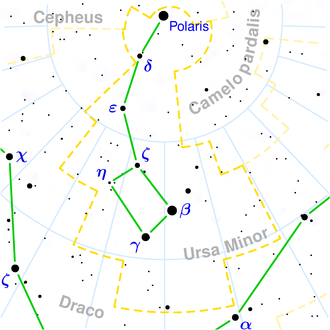NGC 5607
| Galaxy NGC 5607 |
|
|---|---|
|
|
|
| AladinLite | |
| Constellation | Little Bear |
|
Position equinox : J2000.0 , epoch : J2000.0 |
|
| Right ascension | 14 h 19 m 26.7 s |
| declination | + 71 ° 35 ′ 18 ″ |
| Appearance | |
| Morphological type | S pec |
| Brightness (visual) | 13.1 mag |
| Brightness (B-band) | 14 likes |
| Angular expansion | 0.9 ′ × 0.8 ′ |
| Position angle | 66 ° |
| Surface brightness | 12.6 mag / arcmin² |
| Physical data | |
| Redshift | 0.025334 ± 0.000117 |
| Radial velocity | 7595 ± 35 km / s |
|
Stroke distance v rad / H 0 |
(346 ± 24) x 10 6 ly (106.2 ± 7.4) Mpc |
| history | |
| discovery | William Herschel Lewis Swift |
| Discovery date | March 16, 1785 June 7, 1888 |
| Catalog names | |
| NGC 5607 • IC 1005 • UGC 9189 • PGC 51182 • CGCG 337-007 • MCG + 12-14-001 • IRAS 14188 + 7148 • 2MASX J14192669 + 7135177 • Mrk 286 • GC 3875 • H II 331 • VII Zw 547 | |
NGC 5607 or Mrk 286 (also Mkn 286 ) is a starburst galaxy in the constellation Ursa Minor, around 346 million light years away .
The object is considered a candidate to merge a spiral galaxy with an elliptical galaxy. Mapping of the atomic gas in the galaxy with the aid of interferometric observations HI resulted in this wavelength range, a star formation rate of 40 M ☉ / a , and brought about a 200 KPC long streamers to light.
The object was discovered on March 16, 1785 by William Herschel (listed as NGC 5607) and on June 7, 1888 by Lewis Swift (listed as IC 1005).
literature
- E. Manthey, S. Hüttemeister, S. Aalto, C. Horellou: "The gas content of moderate-luminosity mergers"; in: New Astronomy Reviews 51, pp. 71–74 (2007)
